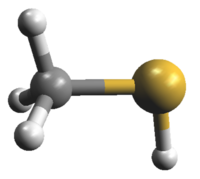|
The present entry was greatly extended in J
and K quantum numbers as well as in frequency
with respect to the first entry from Jan. 2012.
The extry is based on
(1) O. Zakharenko, V. V. Ilyushin, F. Lewen,
H. S. P. Müller, S. Schlemmer, E. A. Alekseev,
M. L. Pogrebnyak, I. A. Armieieva, O. Dorovskaya,
L.-H. Xu, and R. M. Lees,
2019, Astron. Astrophys. 629, Art. No. A73.
New measurements covering almost all of the region
between 49 and 510 GHz replace a large fraction of
the older literature data and supplements it with
new assignments. Large portions of the data between
about 1.1 and 1.5 THz and near 1.8 THz
from
(2) L.-H. Xu, R. M. Lees, G. T. Crabbe, J. A. Myshrall,
H. S. P. Müller, C. P. Endres, O. Baum, F. Lewen,
S. Schlemmer, K. M. Menten, and B. E. Billinghurst,
2012, J. Chem. Phys. 137, Art. No. 104313
were reanalyzed. A small part of the data and the extensive
FTFIR data were taken directly from that work.
Data below 49 GHz were taken from
(3) T. Kojima and T. Nishikawa,
1957, J. Phys. Soc. Jpn. 12, 680;
and from
(4) T. Kojima,
1960, J. Phys. Soc. Jpn. 15, 1284;
and from
(5) R. M. Lees and M. A. Mohammadi,
1980, Can. J. Phys. 58, 1640.
Two lines near 83 GHz were also taken from (5).
Data between 150 and 154 GHz, near 190.2 GHz,
between 251 and 260 GHz, and near 326.7 GHz
were taken mostly from
(6) K. V. L. N. Sastry, E. Herbst, R. A. Booker,
and F. C. De Lucia,
1986, J. Mol. Spectrosc. 116, 120;
and from
(7) F. L. Bettens, K. V. L. N. Sastry, E. Herbst,
S. Albert, L. C. Oesterling, and F. C. De Lucia,
1999, Astrophys. J. 510, 789.
Experimental microwave and millimeter-wave transition
frequencies have not been merged. The list with
reference labels can be accessed in the
Cologne Spectroscopy Data section.
The calculated frequencies should be reliable throughout.
Please note that the vibrational identifiers correspond in
the present calculation to the torsional quantum number m.
The values 0 and 1 correspond to A and E symmetry
lines, respectively, of vt = 0.
The corresponding values for vt = 1
are –3 and –2, those for
vt = 2 are 3 and 4. The signs
of Ka designate the parity for A
symmetry lines; for E symmetry lines, they designate
in the picture of a degenerate state of a symmetric rotor.
Lower state energies are given referenced to the J =
K = 0, A, vt = 0 level,
which is about 112 cm–1 above the bottom of
the torsional potential well.
Please note that the upper state degeneracy and the partition
function values were calculated here with gI
= 1, not 4 as in the earlier compilation. The partition function
consider states with vt ≤ 2,
J ≤ 70, and K ≤ 20.
The experimental ground state dipole moment was
reported in
(6) S. Tsunekawa, I. Taniguchi, A. Tambo, T. Nagai,
and T. Kojima,
1989, J. Mol. Spectrosc. 134, 63.
|
